
New Poetics
During the 1950s, in the wake of World War II, many artists rejected realism in favor of abstraction. In search of a fresh way to communicate profound spiritual and emotional meaning, these artists developed a new pictorial language based on vivid color, energetic brushwork, simple forms, and emphatic marks. Their work has inspired generations of younger artists interested in exploring the gap between representation and abstraction. These new approaches are varied and often highly personal: Some artists carefully distill what they observe to its pure visual essentials; others combine abstract imagery with objects, which sometimes are physically embedded in the work. Still others use materials, such as barbed wire or embroidery threads, which are heavy with meaning. Their works are part of a new poetics of abstraction in which pure form invites contemplation while being linked to the world around us.
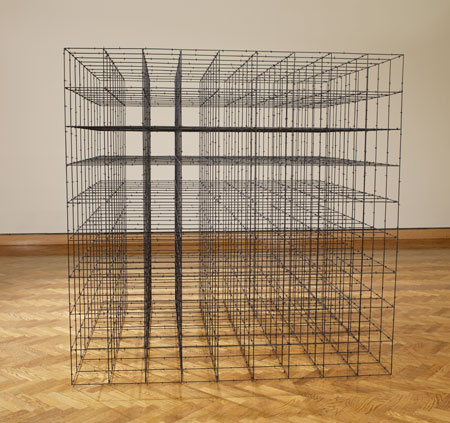
Mona Hatoum
Cube (9x9x9), 2008
Black finished steel
71 x 71 x 71 inches
The Ethel Morrison Van Derlip Trust Fund
Reviving Realism
For most of human history, artists have sought to represent the world around them. From the Paleolithic cave paintings at Lascaux to the grand-scale landscapes and history paintings popular in the mid-nineteenth century, realistic art was valued above all else. Only during the last century did realism become unfashionable in the West, as artists engaged with abstraction, language, ideas, performance, and other image-making strategies. However, thanks to an increasingly pluralistic world, realism is today enjoying a vibrant resurgence. Artists in the United States, Europe, Asia, Africa, and Latin America are using figural and representational approaches to explore individual and cultural identity, the natural world, interpersonal relationships, the pleasures and politics of the body, and even the nature of images themselves. Because each of us perceives the world uniquely, realism is ultimately as subjective as abstraction, and the works on view here are as diverse in style and approach as the artists themselves.
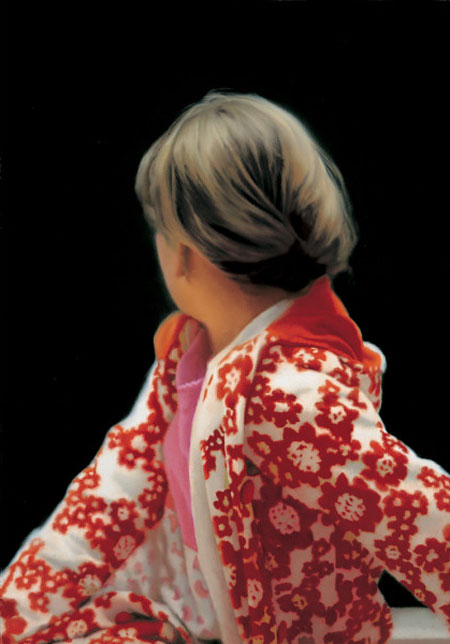
Gerhard Richter
Betty, 1991
Offset lithograph
49 x 40 inches
Collection of Peggy and Ralph Burnet
Poptical
Since the 1950s, when consumer culture and mass media began their furious growth, artists have been fascinated with their products and images. Pop Art, which first appeared in Britain and the United States during the late 1950s and early 1960s, is the most well known artistic movement of its time. Fresh, lively, and brash, Pop proposed that the everyday world is a fine and fascinating subject for art, and practitioners such as Andy Warhol and Peter Blake lifted their imagery directly from the vast world of consumer goods, advertisements, and the popular press. Today, globalization and mass media allow goods and images to move freely across national boundaries. Pop culture has spread to almost every corner of the globe, and "neo-Pop" has become a worldwide artistic language. Young artists are less concerned with the imagery of consumer capitalism than with its underlying concepts, such as brand identity, the psychology of desire, and the utter seductiveness of surface. In its earlier incarnations and now, Pop's message remains ambiguous: It is sometimes a celebration and sometimes a critique of the politics of abundance.
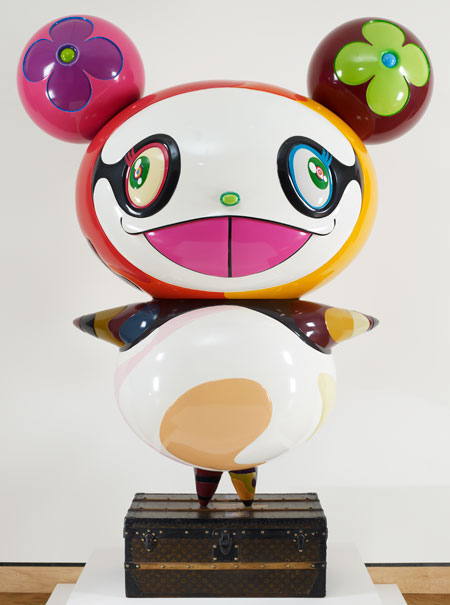
Takashi Murakami
Panda, 2002
Fiberglas with antique Louis Vuitton trunk
100 x 65 x 43 inches
Collection of Gordon Locksley and George T. Shea
Recuperation
Artists have been recycling trash, scrap, and cast-offs in their work since the 1910s, when the Dadaists began making sculpture from found objects and the Cubists first glued fragments of newspaper onto the surfaces of their paintings. During the past fifty years, as the expanding global economy produces more and more goods, these two basic strategies—known as assemblage and collage—have become increasingly prevalent. Like Pop Art, assemblage and collage draw on consumer culture as a source, but they do so by incorporating the products themselves rather than reproducing their images. The works in this gallery are constructed out of materials scavenged from trash bins, flea markets, scrap yards, and antique stores. Some are witty reconfigurations in which one object morphs into another; others are gorgeous, even sublime abstractions made from nothing more than the stuff of everyday life.
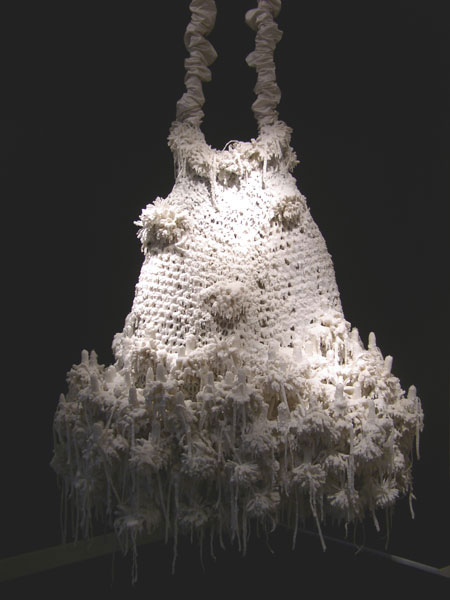
Petah Coyne
Untitled 752, 1992-93
Wire, wax, found objects, metal chain, silk sleeves
56 x 51 x 37 inches
Courtesy Carl Solway Gallery, Cincinnati
Passages
In our increasingly diverse world, both national and individual identities are rapidly shifting, as borders fluctuate, people move about or are displaced, and digital technology enables speedy communication. The works in this section explore some of the reasons our world has changed so drastically during the past fifty years, including cultural migration, diasporas, and dislocation; shifting notions about race in a "post-racial" world; colonialism and its legacy; nascent feminism in many developing nations; and a homogenized society in which it is increasingly difficult to define oneself. Many of these works were made in the past two decades but have their roots in the often-angry debates of the 1960s and 1970s, when women, blacks, Native Americans, and homosexuals were fighting for their rights and colonized peoples were struggling for freedom. Much has changed since then: Corrupt political systems have collapsed, new voices are being heard, and our tolerance has increased. On the other hand, as the works here suggest, not much has changed at all.
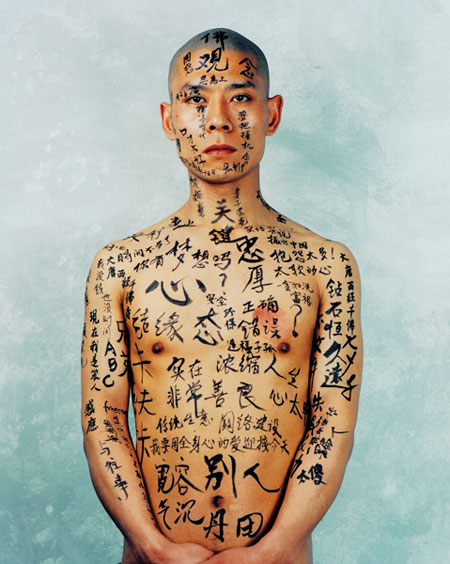
Zhang Huan
½ (Text), 1998
Chromogenic print
49.575 x 39.75 inches
Gift of Gordon Locksley and George T. Shea









































